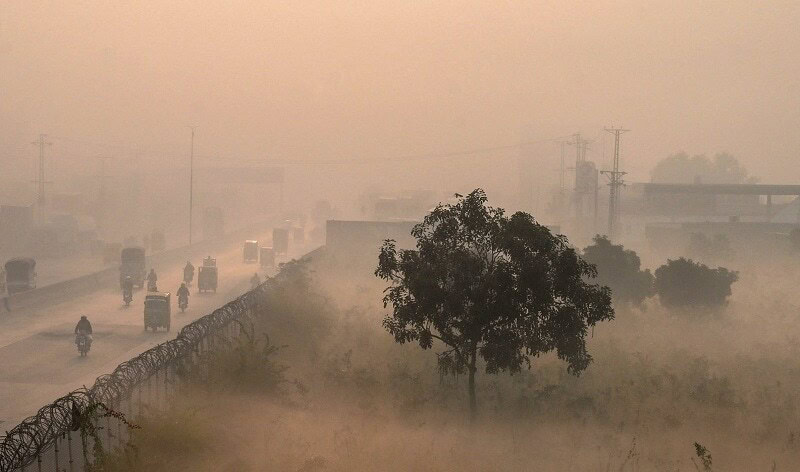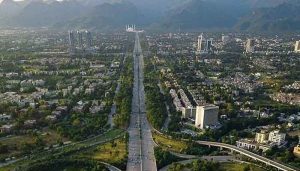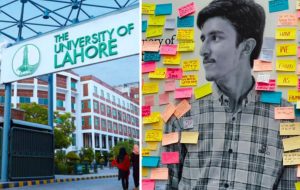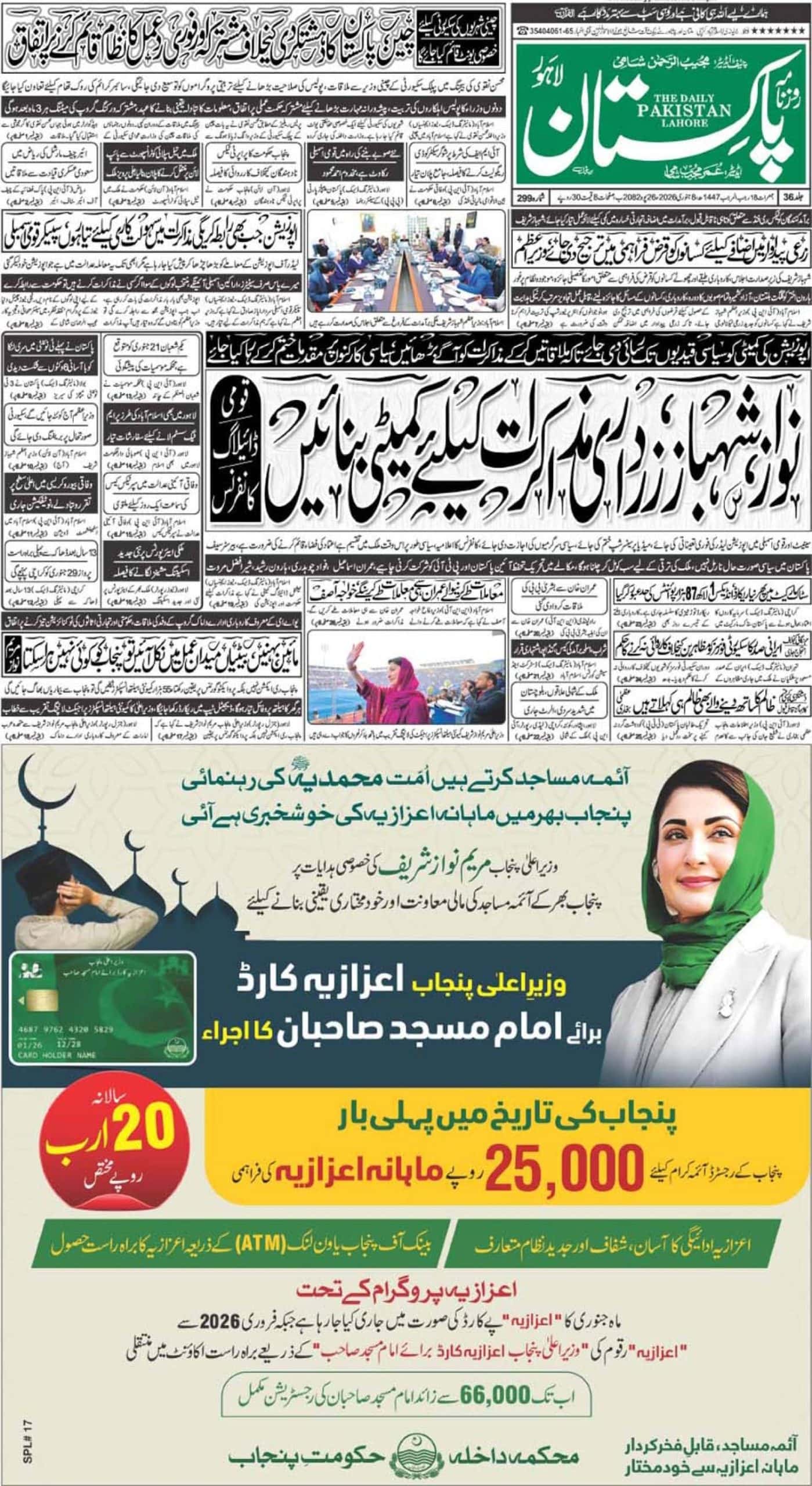Over the past few years, smog has become a critical environmental emergency in Lahore due to crop burning in Punjab province. The authorities should have promptly dealt with this issue, but successive Pakistani governments have sadly ignored it.
According to the IQAir report of 2022, Lahore was positioned as the most polluted city in the world in terms of air quality, with an alarming air quality index of 173. Over time, the air quality index has increased to 207 as of January 2024, making it one of the unhealthiest cities. These prevailing unhealthy conditions in Lahore have led to severe respiratory diseases and cardiovascular problems, mainly affecting vulnerable groups like children and the elderly.
The severity of the current crisis calls for an urgent development of comprehensive solutions, particularly during the smog season from October to February, when air quality plummets to hazardous levels. Furthermore, cutting-edge solutions can be implemented to manage air quality in Lahore. One of those solutions is the Smog Eating Billboard, introduced by Dutch architect and artist Daan Roosegaarde, along with students from UDEM University in Mexico.
The prime respiratory ailments attributable to smog in Lahore encompass asthma, allergic reactions, chronic obstructive pulmonary disease (COPD), bronchitis, and impaired lung development in children. In a similar vein, the smog crisis precipitates significant cardiovascular issues, including heart disease, strokes, and hypertension. Moreover, it adversely impacts crucial economic sectors, particularly workplace productivity, healthcare expenditures, and the tourism industry. Due to prevalent health issues and increased missed working days, workplace productivity has declined, resulting in decreased efficiency. Furthermore, the situation has also escalated health costs due to frequent medical consultations and increased government expenditure on health resources. Lahore is already grappling with strained healthcare infrastructure.
Moreover, in the last fifteen years, the increasing smog has not only caused the greenery in the city to decline but has also killed the crops in the farmlands surrounding Lahore. Experts believe that Lahore’s forest and vegetation loss has increased by 6% during this period. This statistic clearly shows that smog is harming the local ecosystem and decreasing agricultural productivity in a country with a primarily agrarian economy.
Elevated concentrations of air pollutants, including PM2.5, PM10, and ozone (O₃), obstruct sunlight penetration, adversely affecting plant life. Similarly, the increased pollutants, particularly nitrogen oxides (NOx) and sulfur oxides (SOx), are causing increased acid rain, which is causing severe damage to aquatic ecosystems. In addition, the respiratory systems of animals, especially birds and small mammals, are poorly affected due to their sensitivity to toxins. Moreover, soil contamination substantially damages agriculture, resulting in diminished crop yields.
The city of Lahore, with its extensive advertising landscape of over 1150+ hoardings, presents an exceptional opportunity to integrate cutting-edge smog-eating technology into the advertising landscape. These billboards are fundamentally designed with a top surface coated in photocatalytic materials such as titanium oxide, which effectively adsorb harmful pollutants such as nitrogen oxides (NOx), volatile organic compounds (VOCs), and particulate matter (PM) from the air. On exposure to sunlight, the photocatalytic materials initiate a chemical reaction producing reactive oxygen species (ROS) . The ROS subsequently oxidize organic pollutants into less harmful compounds for example, decomposing nitrogen oxides into less toxic nitrates and volatile organic compounds into less dangerous molecules. Many cities worldwide have implemented this technology, including Mexico City (Mexico), Los Angeles (USA), Seoul (South Korea) and Amsterdam (Netherlands), demonstrating its effectiveness in improving air quality.
If Lahore were to replace all its billboards with this state-of-the-art technology, it could effectively purify the air equivalent to that produced by 292,800 trees in a mere six hours, positioning the initiative as a transformative solution for the city. This initiative offers substantial health benefits for Lahore’s residents, primarily by mitigating the prevalence of respiratory ailments.
Due to increased air quality, the population of Lahore will experience a reduction in respiratory diseases such as asthma, bronchitis, and chronic obstructive pulmonary disease (COPD). Furthermore, the enhanced air quality will decrease medical consultancies, stabilizing healthcare costs and infrastructure challenges. These improvements will be crucial in improving quality of life and healthcare. Furthermore, it will yield significant environmental benefits, particularly in reducing carbon footprint. Implementing smog-eating billboards will also contribute to a cleaner ecosystem, promoting animals and plants to thrive. Similarly, from an economic perspective, implementing such billboards will establish Lahore as a place that supports innovative solutions and position it as a forward-thinking urban centre, attracting tourists and foreign investments.
While putting up smog-eating billboards in Lahore will undoubtedly be beneficial, such an endeavour will not be without its challenges. For starters, producing such billboards would require considerable amounts of titanium oxide, a material not commonly produced in Pakistan and would likely have to be imported from China or Australia. Furthermore, unlike their regular counterparts, smog-eating billboards need constant upkeep to function effectively. Considering that most marketing companies and firms with advertising departments are used to simply putting up billboards and then leaving them alone, this characteristic may sound unappealing to them.
It could even put them off the entire idea. However, as implied above, the benefits of using smog-eating billboards far outweigh the issues linked to putting up/maintaining them, even though, admittedly, such advantages may not be visible in the short term. The simple fact is that smog is an issue that negatively affects everyone, from schoolchildren to farmers to CEOs. This includes marketers and advertising agencies. For instance, putting up a smog-eating billboard may seem time consuming and financially pointless but, as any competent advertiser will be able to calculate, constantly cleaning/replacing billboard skins that have been discoloured due to smog can prove to be far costlier in the long run, mainly because more smog equals faster discolouration and the problem is multiplied by the number of billboards that an establishment is responsible for. In conclusion, smog is not just an ecological issue but also an economic and social one.
Smog-eating billboards are a step towards a cleaner future for Lahore. To fully benefit from this innovative technology, governmental bodies, advertising agencies, and private organizations must facilitate its integration. By investing in this cutting-edge technology, advertising agencies and private organizations can significantly contribute to a cleaner city environment.














